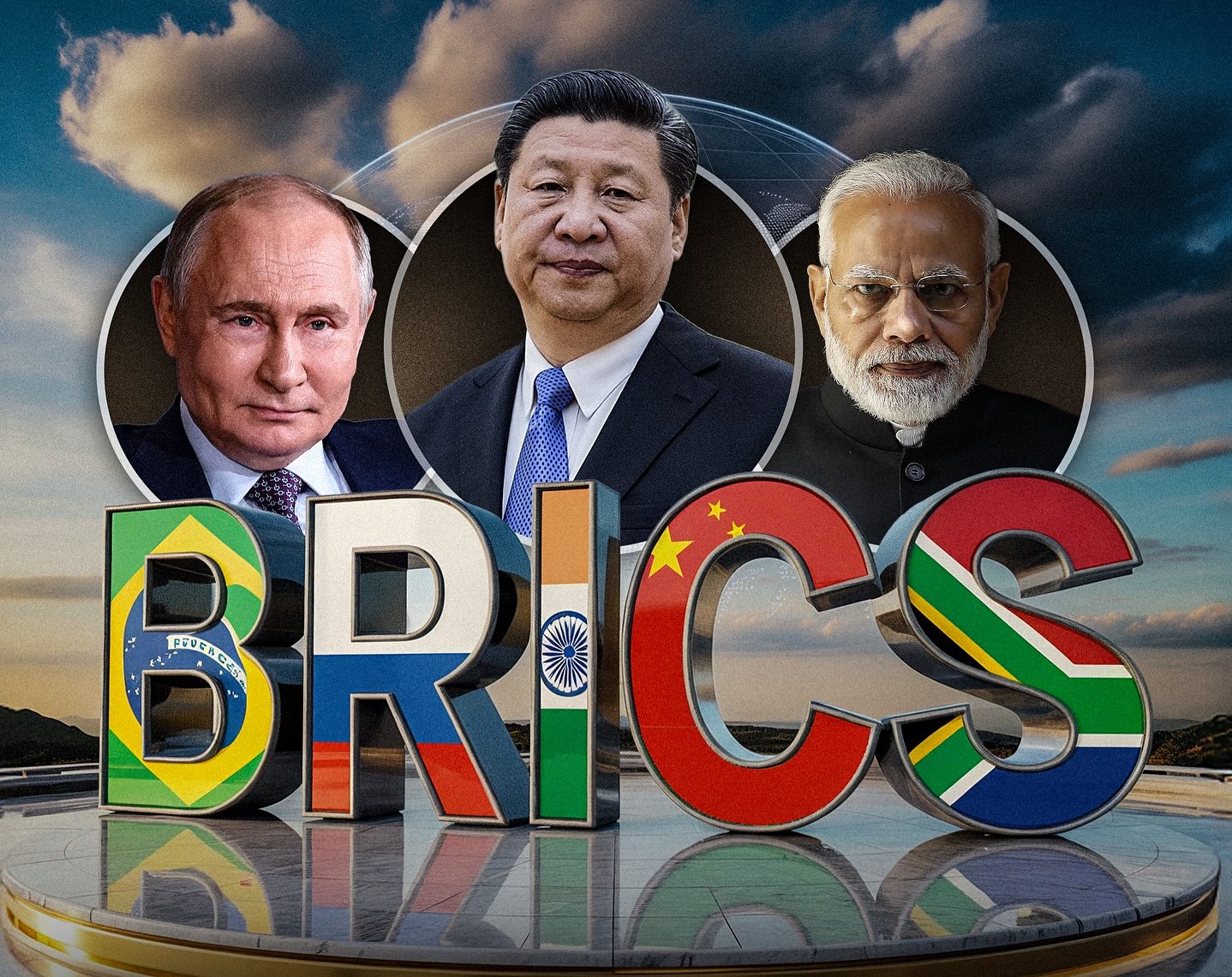These Are All the BRICS Countries and How Rich They Are — The Economies Reshaping Global Power
Iran — Ali Khamenei — $341 Billion
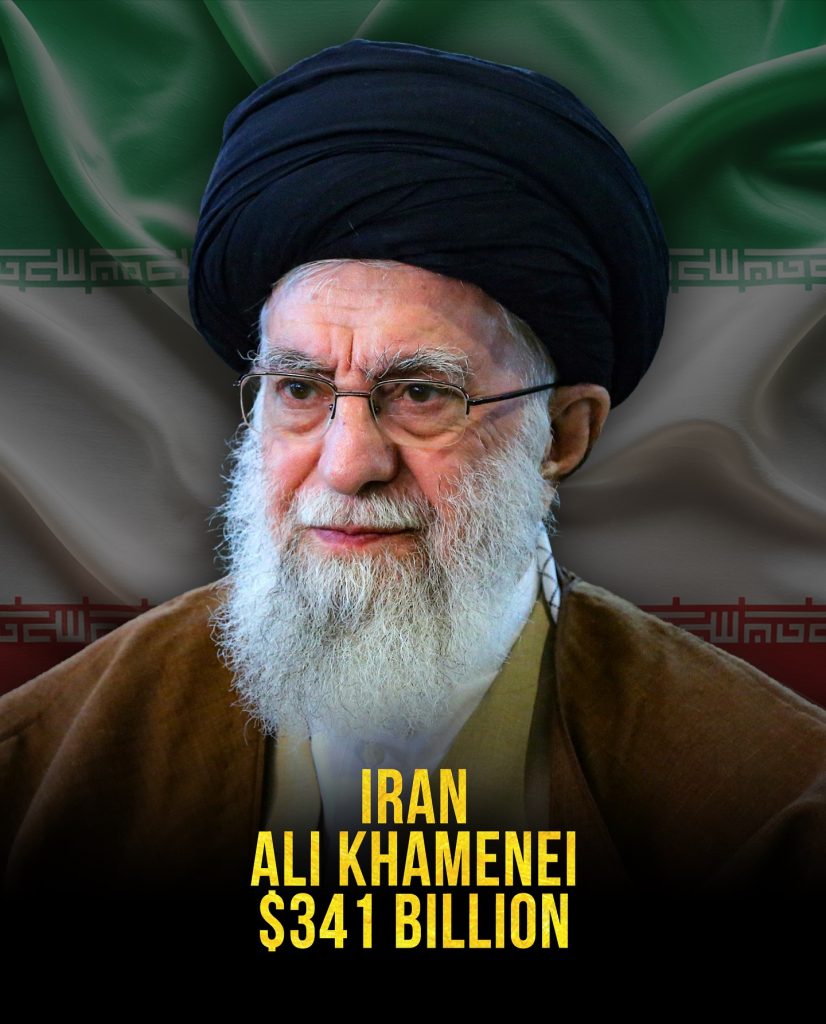
Iran’s economy, valued at around $341 billion, reflects both vast potential and long-standing challenges. Rich in oil and natural gas, the country sits on some of the world’s most important reserves, yet decades of sanctions and isolation have kept its economy from fully opening up. For ordinary Iranians, that number translates into a constant balancing act: inflation, limited foreign investment, but also a strong sense of resilience. Ali Khamenei represents continuity in a system where politics and economics are deeply connected. Iran’s GDP shows that while the country remains constrained, its role in energy and regional influence cannot be ignored.
Egypt — Abdel Fattah El-Sisi — $347 Billion
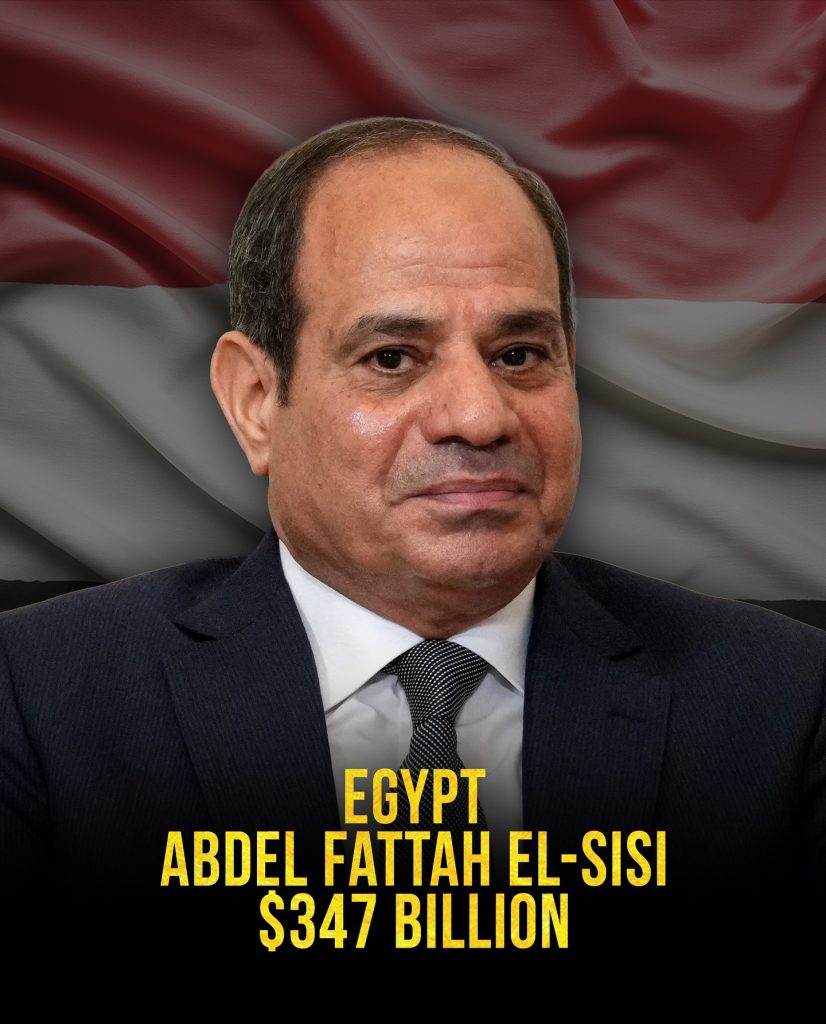
Egypt’s $347 billion economy is built on ancient soil with modern ambitions. The Suez Canal alone makes it a strategic trade hub, linking east and west, while tourism, agriculture, and infrastructure projects feed into growth. Abdel Fattah El-Sisi’s leadership has emphasized stability and mega-projects, but for everyday Egyptians, rising prices and unemployment remain pressing realities. Egypt’s role within BRICS expansion shows how North Africa’s largest nation is positioning itself as both a bridge and a rising partner in global markets.
South Africa — Cyril Ramaphosa — $410 Billion
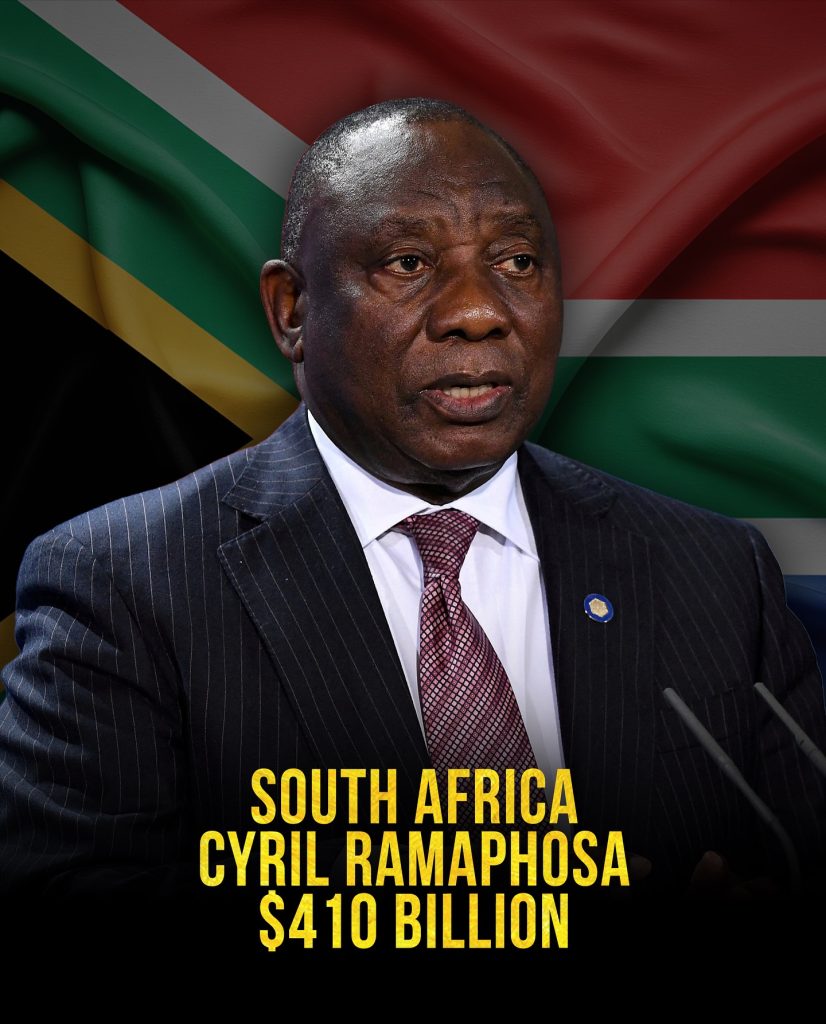
South Africa, at $410 billion, is Africa’s most industrialized economy. It is resource-rich, home to mining giants in gold, platinum, and diamonds, while also serving as a financial gateway to the continent. Yet inequality remains a major challenge, with townships and suburbs existing side by side. Cyril Ramaphosa’s government has pushed for reforms and investment, but power shortages and unemployment weigh heavily. Despite this, South Africa’s membership in BRICS places it at the heart of Africa’s connection to global growth.
United Arab Emirates — Mohamed Bin Zayed Al Nahyan — $549 Billion
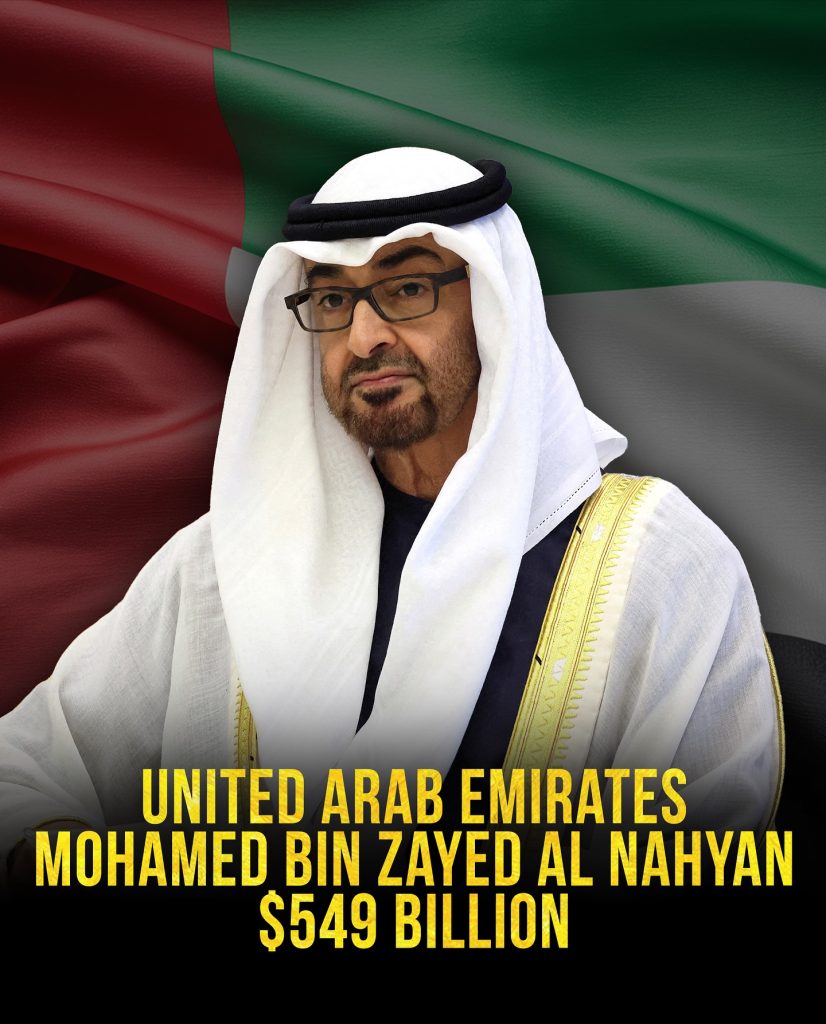
At $549 billion, the UAE is proof of how fast transformation can happen when oil wealth is combined with bold vision. Once a desert economy, it has built futuristic skylines, global airports, and financial centers in just a few decades. Mohamed bin Zayed has driven efforts to diversify beyond oil, investing in technology, renewable energy, and logistics. For many around the world, Dubai and Abu Dhabi symbolize opportunity and luxury, but for the region, the UAE is also a strategic player in trade and innovation.
Saudi Arabia — Mohammed Bin Salman — $1.08 Trillion
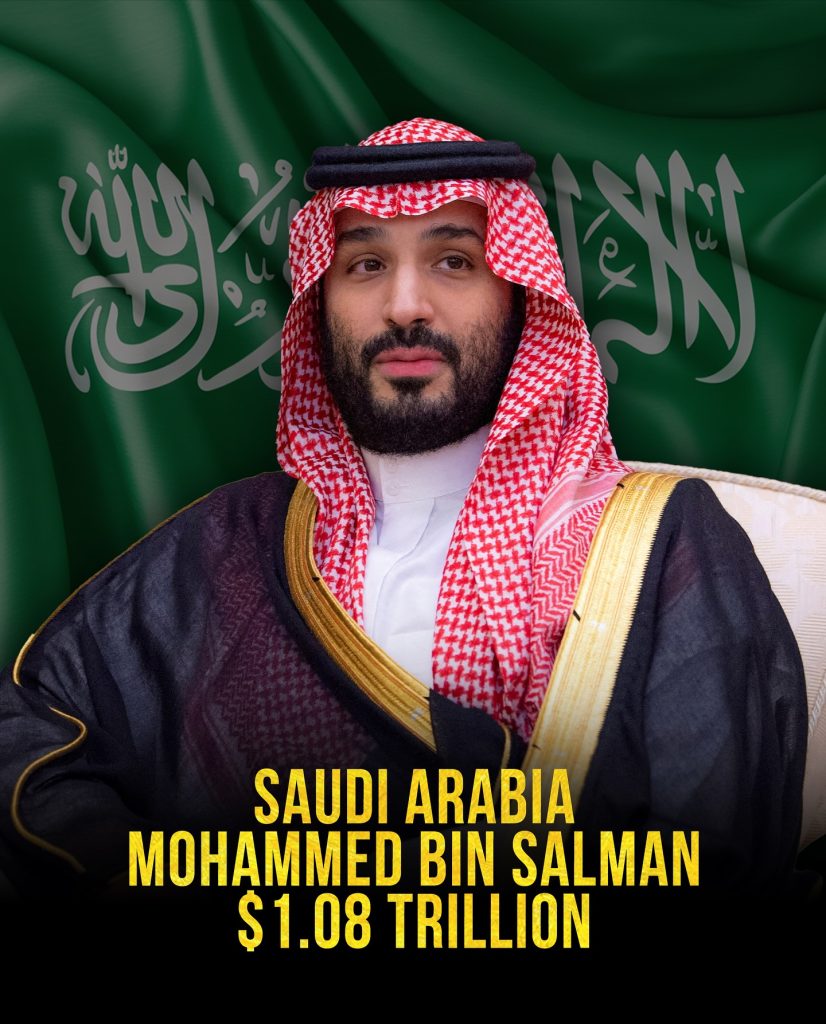
Saudi Arabia’s $1.08 trillion economy remains fueled by oil, but under Mohammed bin Salman’s Vision 2030 plan, it is racing to diversify. Projects like NEOM and new cultural initiatives aim to shift the kingdom’s image from solely an oil producer to a diversified powerhouse. The transformation is ambitious, and while challenges remain, the kingdom’s resources and central role in global energy markets make it a vital economic player. For Saudis, this period is one of great change — new jobs, new freedoms, and new uncertainties.
Indonesia — Prabowo Subianto — $1.43 Trillion
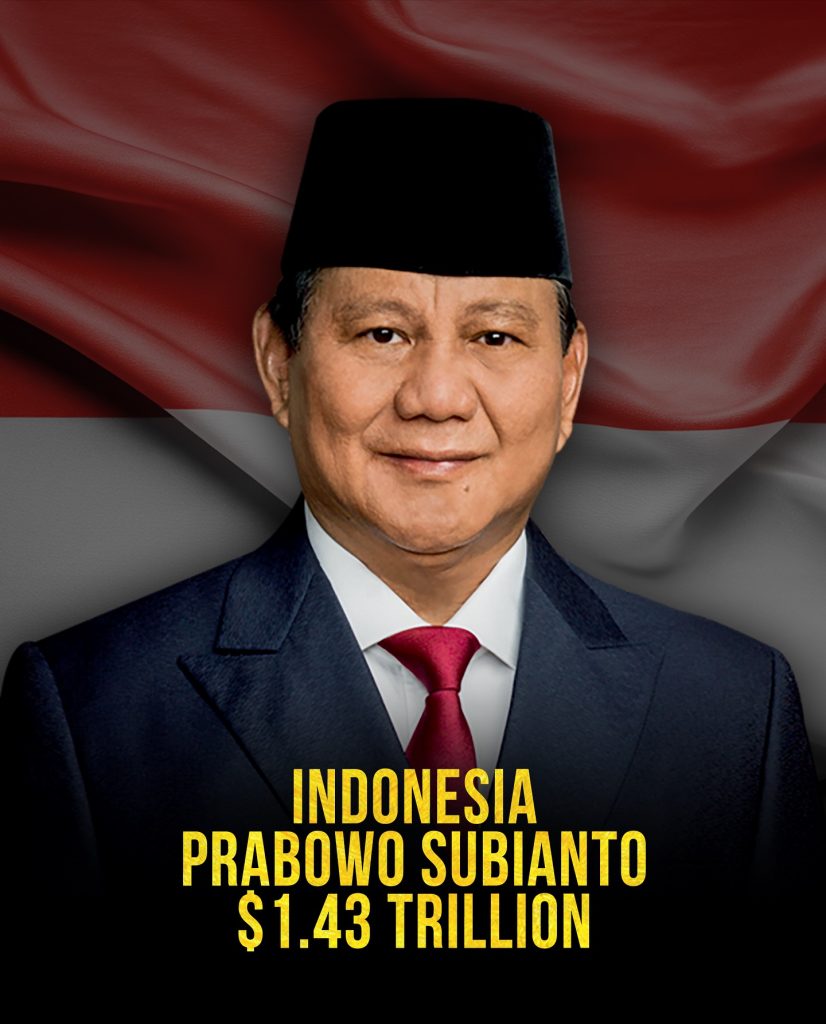
Indonesia’s $1.43 trillion economy is built on diversity — thousands of islands, millions of small businesses, and a fast-growing digital sector. From palm oil exports to manufacturing hubs, Indonesia is positioning itself as one of Asia’s most dynamic economies. Prabowo Subianto’s leadership comes at a time when global investors are eyeing Indonesia as both a market and a production hub. For its people, rapid urban growth brings opportunity and strain, but the trajectory is upward, making Indonesia a key addition to BRICS.
Russia — Vladimir Putin — $2.08 Trillion
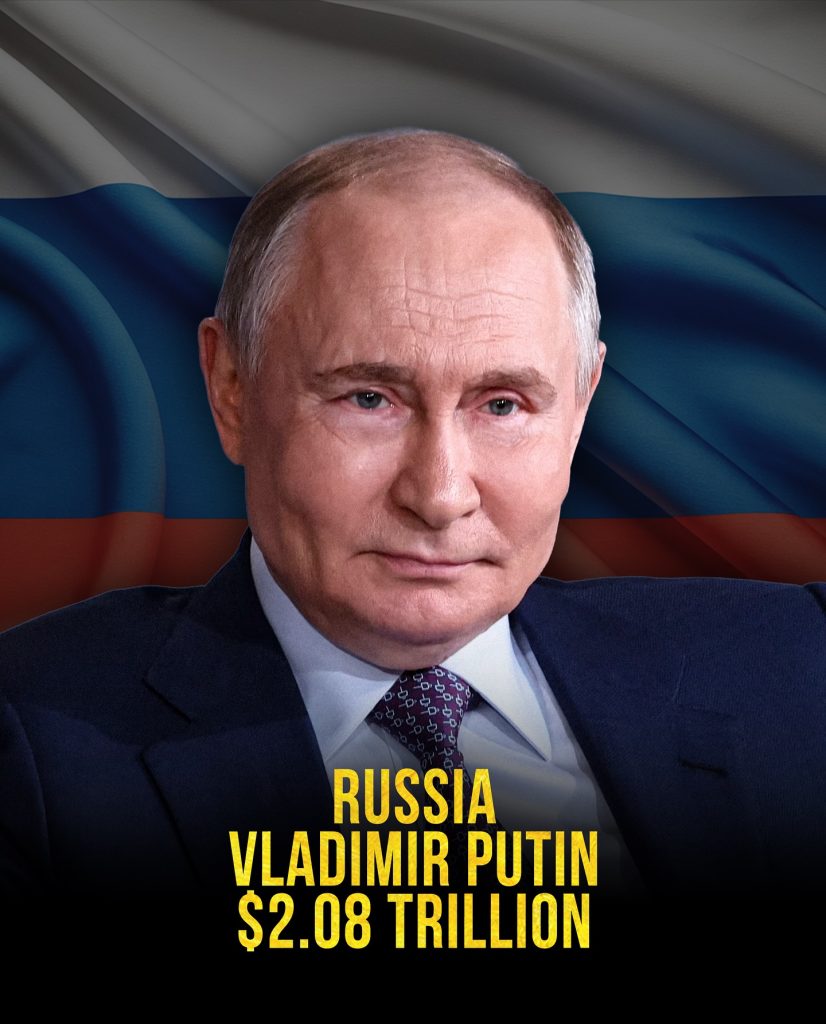
Russia, with its $2.08 trillion economy, remains one of the world’s largest exporters of oil, gas, and metals. Under Vladimir Putin, the country has tied economic strategy tightly to geopolitical ambitions. Sanctions and global tensions have reshaped Russia’s trade flows, pushing it closer to Asia and BRICS partners. Despite these pressures, its natural resource wealth continues to give it leverage in global markets, particularly in energy. Russia’s GDP reflects resilience in the face of isolation, but also a heavy dependence on commodities.
Brazil — Luiz Inácio Lula Da Silva — $2.13 Trillion
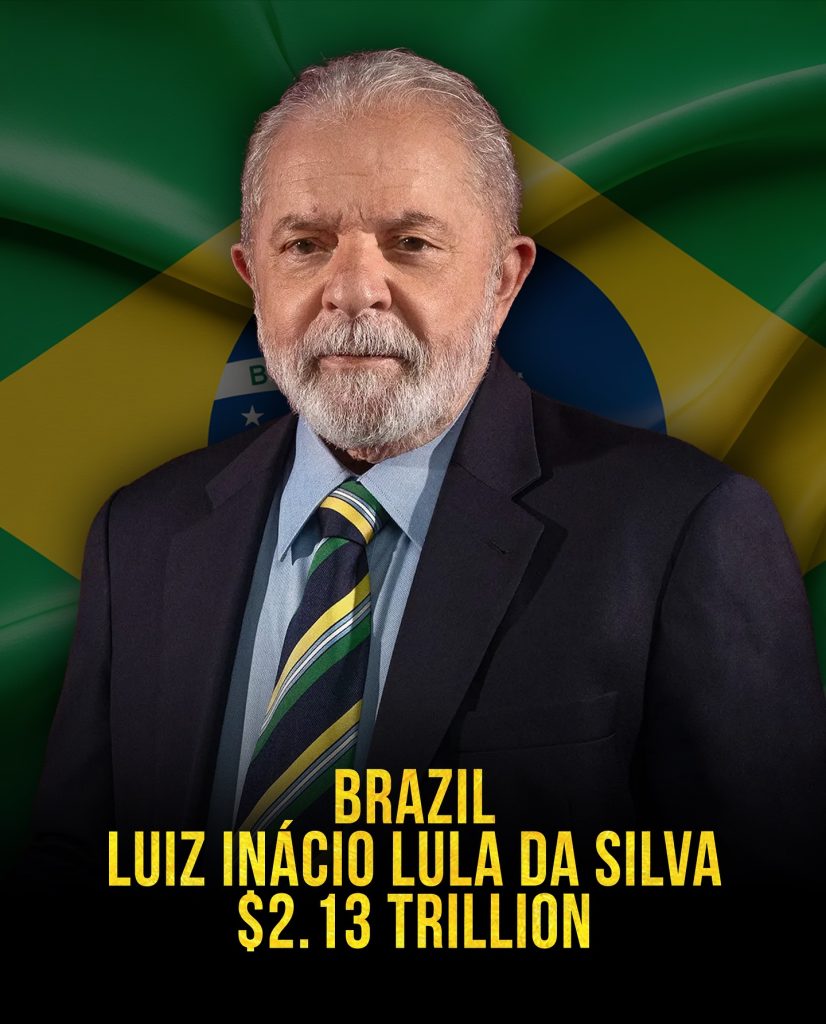
Brazil’s $2.13 trillion economy blends agricultural power, mineral wealth, and urban dynamism. From soybean fields to São Paulo’s financial towers, it plays a central role in global food supply chains and commodities. Lula da Silva’s leadership emphasizes social inclusion while balancing economic pragmatism. Brazil’s size and resources make it indispensable within BRICS, especially as climate and trade issues gain global urgency. For Brazilians, the challenge is converting natural wealth into consistent growth and reduced inequality.
India — Narendra Modi — $4.19 Trillion
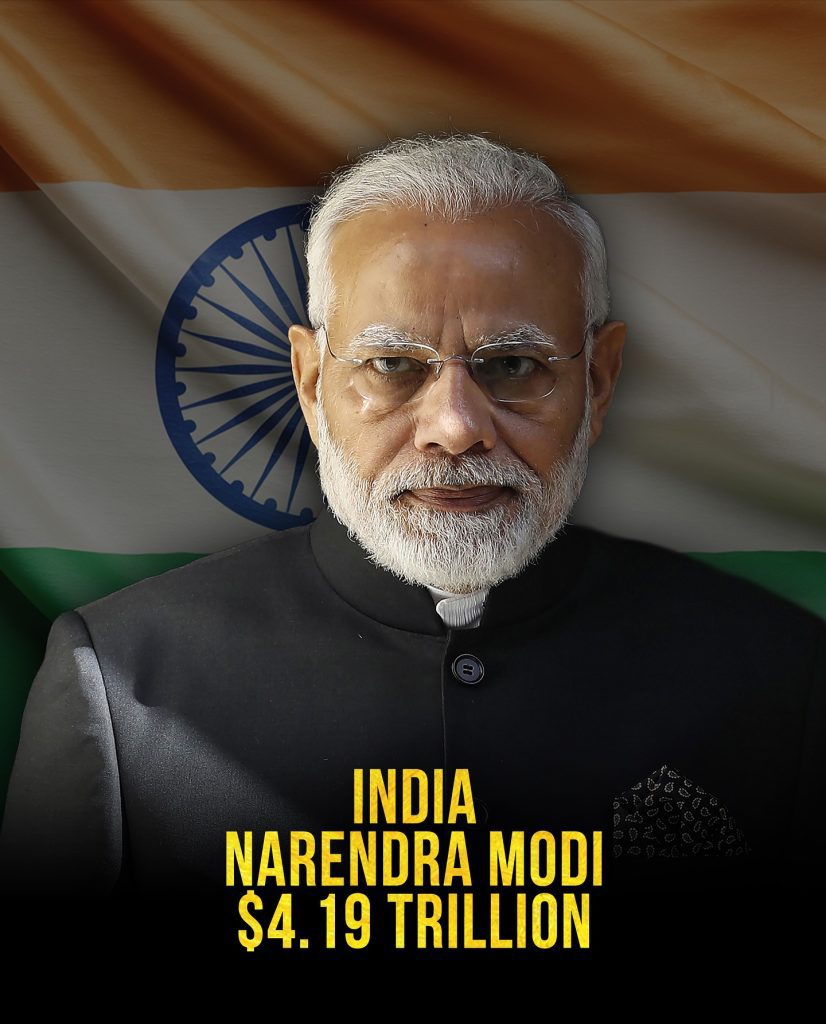
India’s $4.19 trillion economy represents both scale and speed. Under Narendra Modi, digital expansion, infrastructure drives, and international outreach have defined policy. With over a billion people, India’s growth touches everything from tech services to agriculture. Its rising middle class fuels demand, while villages still seek inclusion in the growth story. India’s momentum makes it one of the most important engines in BRICS, capable of shaping global demand and supply chains in the decades ahead.
China — Xi Jinping — $19.23 Trillion
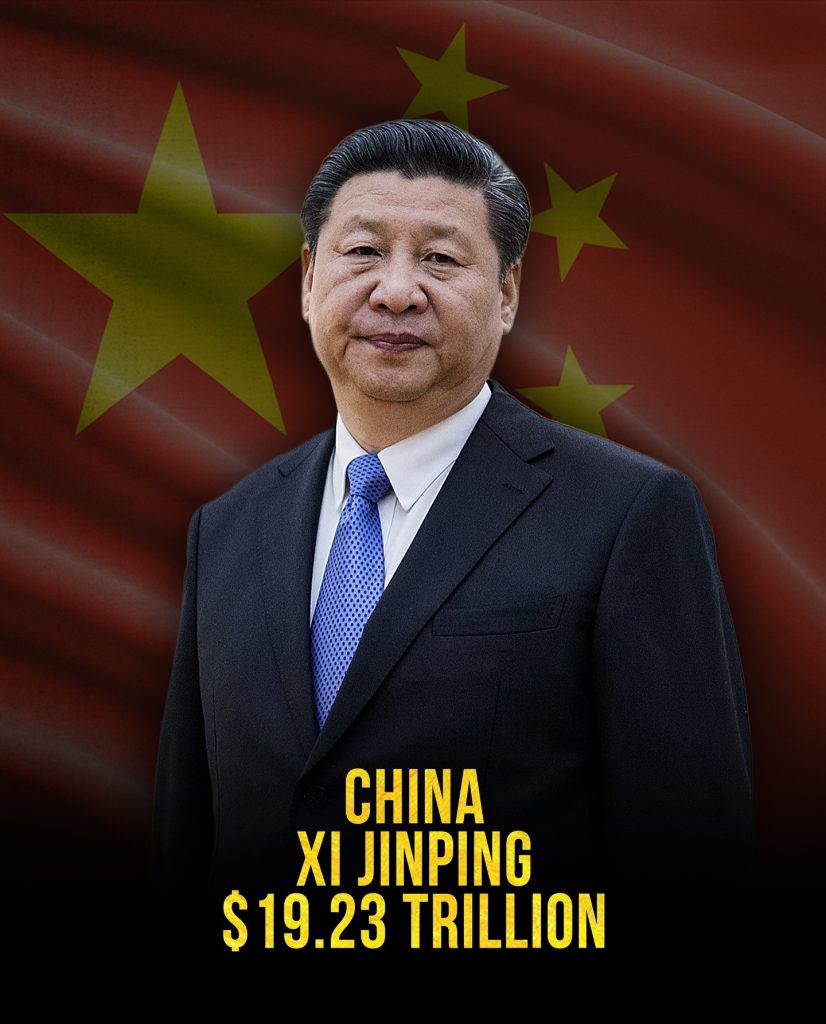
China, at $19.23 trillion, is the heavyweight of BRICS and the world’s second-largest economy. Xi Jinping leads a nation that has transformed from a low-cost manufacturing hub into a leader in technology, infrastructure, and global trade. Its vast market and investment power influence commodity prices, supply chains, and even currency debates. China’s role in BRICS is dominant, but also delicate — balancing cooperation with competition against the United States. For the world, China’s trajectory is one of the most closely watched stories of our time.
United States — Donald Trump — $30.5 Trillion
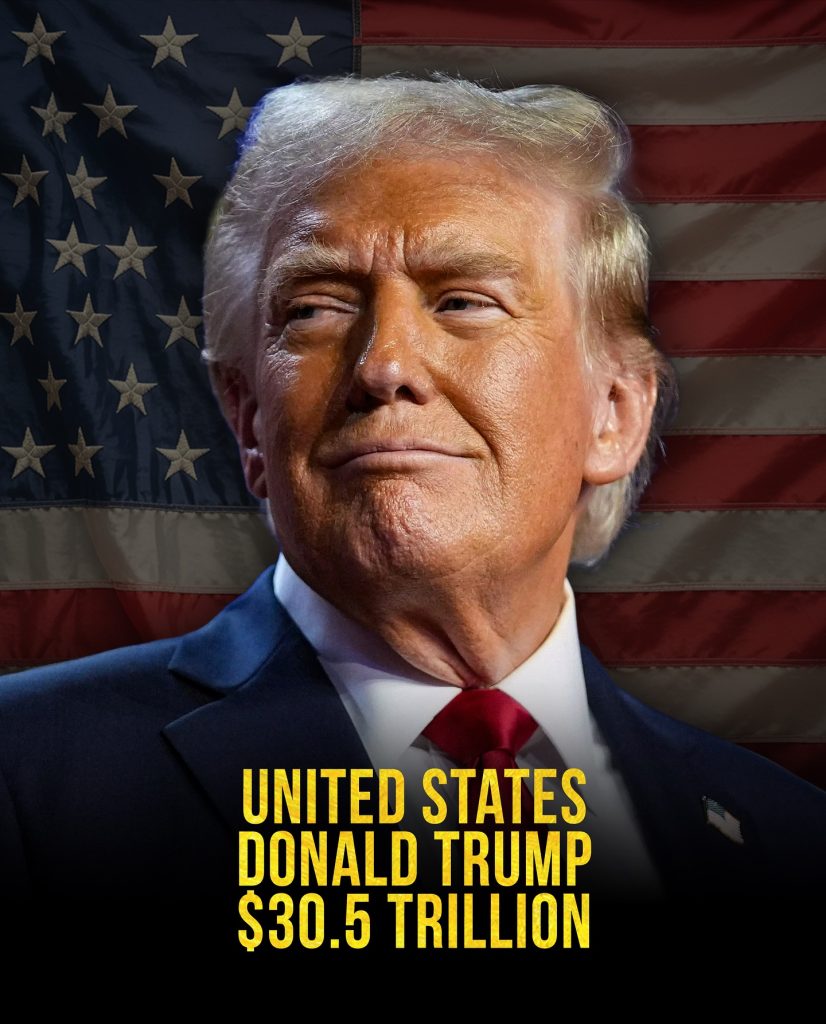
The United States, at $30.5 trillion, remains the world’s largest economy. The image connects this number with Donald Trump, symbolizing the political debates over America’s economic direction. From Wall Street to Silicon Valley, the U.S. remains at the center of global finance, technology, and consumption. Its dollar underpins world trade, and its policies ripple across continents. In the BRICS vs. U.S. comparison, America still holds the largest single economy, but the combined BRICS figure challenges its dominance.
Ethiopia — Abiy Ahmed — $117 Billion
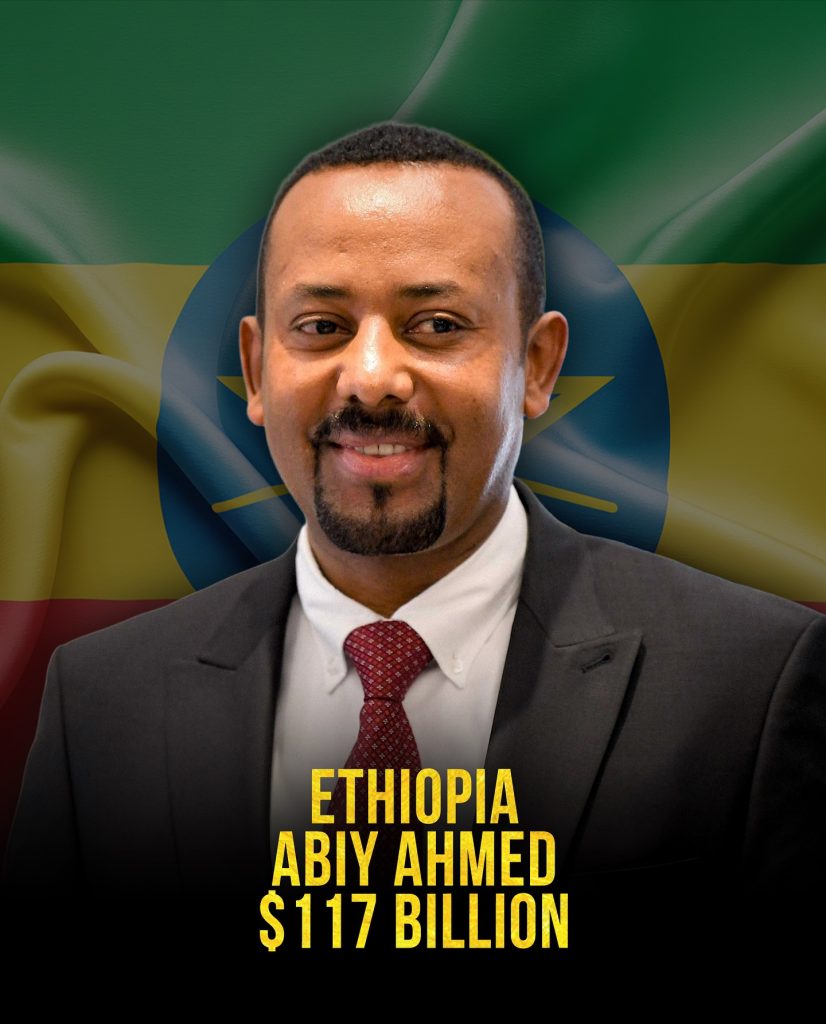
Ethiopia, at $117 billion, may be the smallest in the group, but its inclusion is symbolic of Africa’s potential. Abiy Ahmed’s leadership has focused on reform and connectivity, positioning Ethiopia as a gateway between East Africa and global markets. The challenges are immense — from infrastructure needs to regional tensions — but the country’s youthful population and strategic location mean its story is just beginning. Ethiopia’s presence in BRICS shows that even modest economies can play a role in shaping tomorrow’s global order.
Conclusion
The money map of the world is changing quickly. BRICS, once seen as an informal club of emerging economies, is now a $31.9 trillion force shaping trade, energy, and even politics. Each member brings a different story — from oil-rich kingdoms to rising tech hubs, from resource giants to reforming states. For ordinary people, these numbers matter because they affect jobs, prices, and opportunities. The future of the global economy won’t be written by one country alone but by the balance between giants like the U.S. and coalitions like BRICS.

